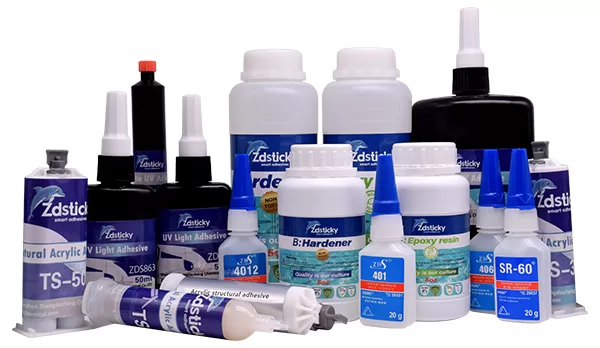Conductive adhesive for electronics is a game-changing solution for creating reliable electrical connections in sensitive devices. With its ability to bond components while allowing electrical conductivity, this adhesive is essential in applications like PCB assembly, flexible circuits, and wearable technology. This guide explores the benefits, applications, and proper usage of conductive adhesives in electronics.
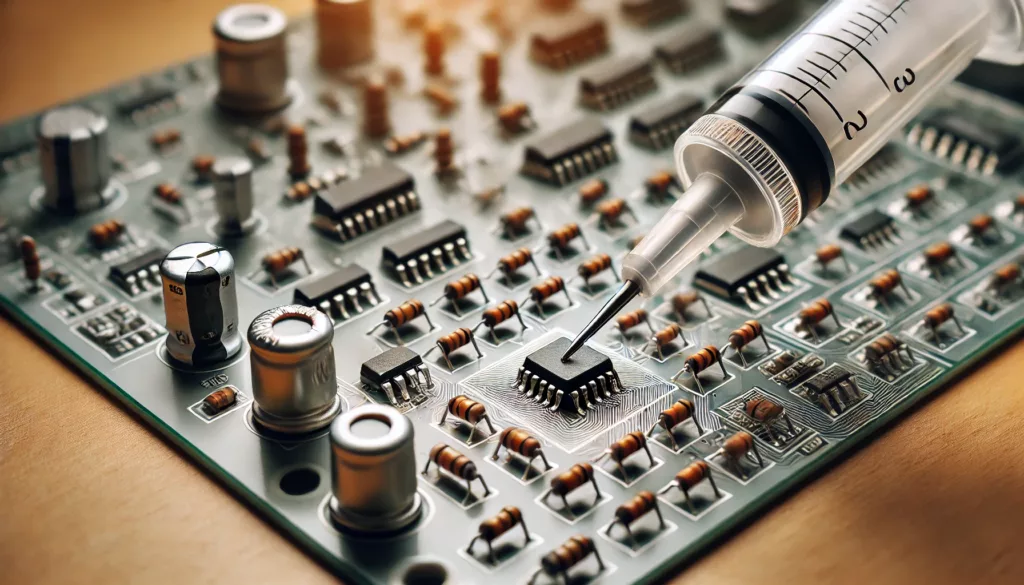
What is Conductive Adhesive for Electronics?
Conductive adhesive is a specialized bonding agent that contains conductive fillers like silver, carbon, or copper particles. It enables both mechanical bonding and electrical conductivity, making it a preferred alternative to traditional soldering in certain applications. Conductive adhesives are ideal for joining delicate components that are heat-sensitive or require precision bonding.
Benefits of Conductive Adhesive in Electronics
- Heat Sensitivity: Allows bonding without exposing components to high temperatures, unlike soldering.
- Flexibility: Provides durable connections even in flexible and stretchable electronic devices.
- Corrosion Resistance: Protects connections from environmental degradation.
- Miniaturization: Suitable for bonding tiny components in modern, compact electronics.
- Eco-Friendly: Contains fewer toxic materials compared to traditional soldering processes.
Applications of Conductive Adhesive in Electronics
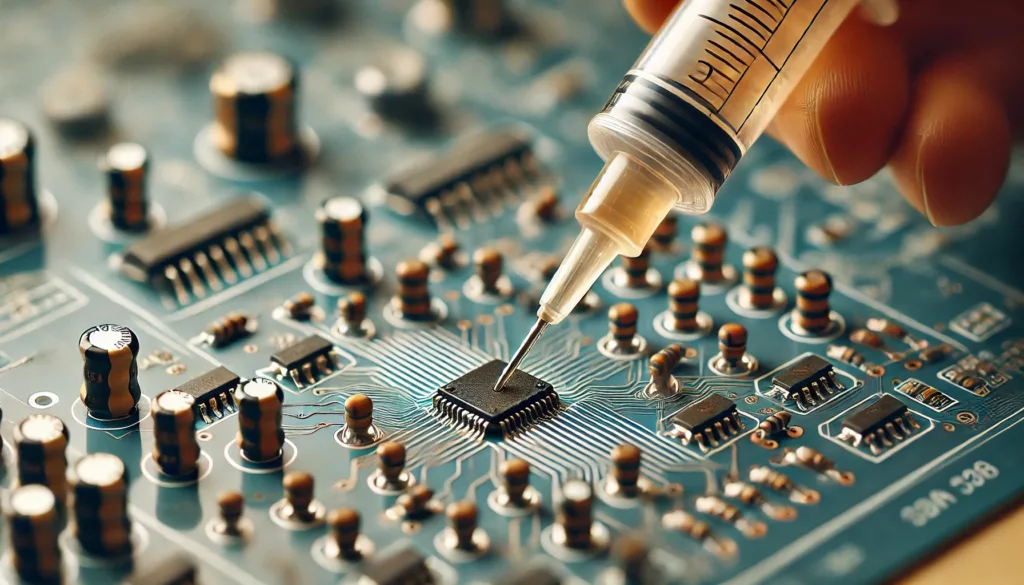
1. PCB Assembly
Used for attaching components to printed circuit boards, ensuring electrical conductivity and durability.
2. Flexible Electronics
Perfect for connecting parts in devices like foldable displays, wearable technology, and IoT gadgets.
3. EMI Shielding
Applies to enclosures and circuits for electromagnetic interference (EMI) shielding.
4. LED Assembly
Bonds and electrically connects LEDs, ensuring thermal management and reliability.
5. Sensor and Antenna Bonding
Essential for connecting sensors, antennas, and other components in automotive and telecommunication applications.
Types of Conductive Adhesives
- Electrically Conductive Adhesive (ECA): Ideal for creating electrical connections in circuits.
- Thermally Conductive Adhesive: Ensures heat dissipation in high-power devices.
- Silver-Filled Adhesive: Offers excellent conductivity for critical applications.
- Carbon-Based Adhesive: A cost-effective option with moderate conductivity.
How to Use Conductive Adhesive Effectively
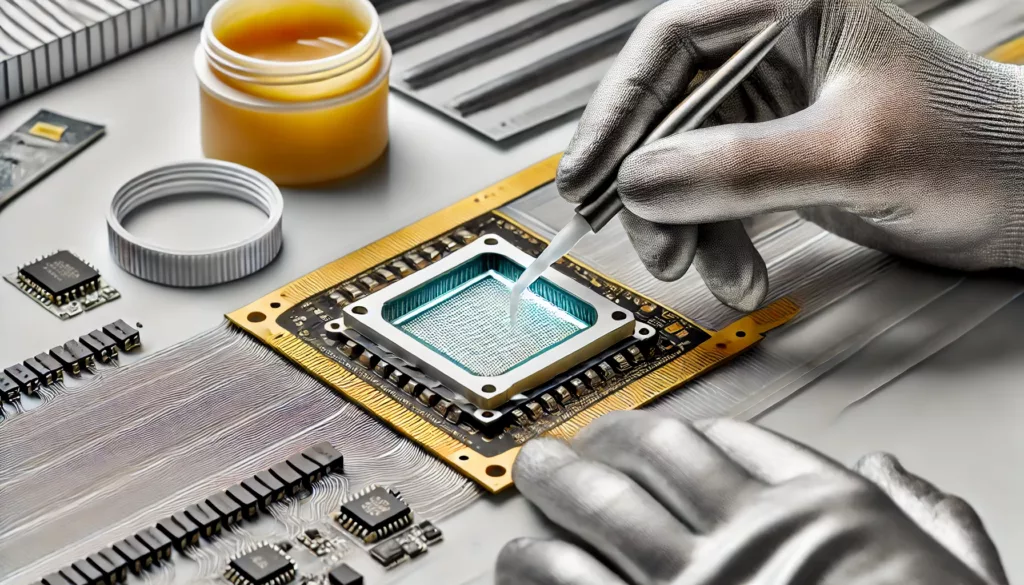
1. Prepare the Surfaces
- Clean the bonding surfaces with alcohol to remove dirt, grease, or oxides.
- Ensure both surfaces are dry and free of debris.
2. Apply the Adhesive
- Dispense the adhesive using a syringe, nozzle, or applicator for precise placement.
- Apply a thin and even layer on the contact points.
3. Align and Bond
- Carefully align the components to ensure proper electrical connection.
- Press the parts together gently to secure the bond.
4. Curing
- Allow the adhesive to cure as per the manufacturer’s instructions.
- Curing can range from a few hours at room temperature to faster curing under heat.
Tips for Choosing the Best Conductive Adhesive
- Consider Conductivity Needs: Select an adhesive with the required level of electrical or thermal conductivity.
- Evaluate Flexibility: For wearable or flexible devices, choose adhesives with high elasticity.
- Check Cure Time: Opt for a product with a curing time that aligns with your project needs.
- Adhesion Strength: Ensure the adhesive can withstand mechanical stress and vibration.
Safety Precautions When Using Conductive Adhesive
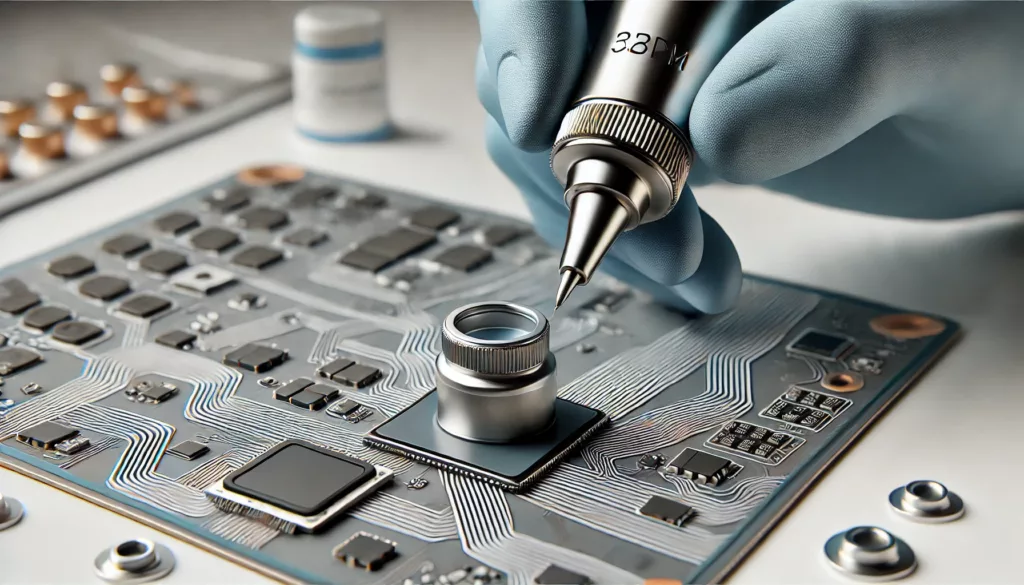
- Work in Ventilated Areas: Prevent inhalation of fumes during application and curing.
- Wear Protective Gear: Use gloves and avoid direct skin contact.
- Store Properly: Keep adhesive containers sealed and store in a cool, dry place.
- Follow Guidelines: Always adhere to the manufacturer’s instructions for application and curing.
FAQs
What is conductive adhesive used for?
Conductive adhesive is used to bond electronic components while maintaining electrical conductivity, replacing solder in certain applications.
Can conductive adhesive replace soldering?
Yes, it is often used as a soldering alternative for heat-sensitive components or precision bonding.
How long does conductive adhesive take to cure?
Curing time varies but typically ranges from a few hours to 24 hours, depending on the product and curing conditions.
What materials can conductive adhesive bond?
It bonds various materials, including metals, ceramics, plastics, and flexible substrates.
Is conductive adhesive waterproof?
Most conductive adhesives offer water resistance, but specific formulations may provide enhanced waterproofing.
What is the shelf life of conductive adhesive?
Typically, conductive adhesives have a shelf life of 6 months to 2 years when stored correctly.
Conclusion
Conductive adhesive for electronics is a vital innovation for creating secure, reliable, and conductive bonds in modern devices. Its ability to replace soldering, support flexible designs, and provide durable connections makes it indispensable across industries like consumer electronics, automotive, and telecommunications. By understanding its applications and proper usage, you can leverage the benefits of conductive adhesives to enhance the performance and durability of electronic projects.





